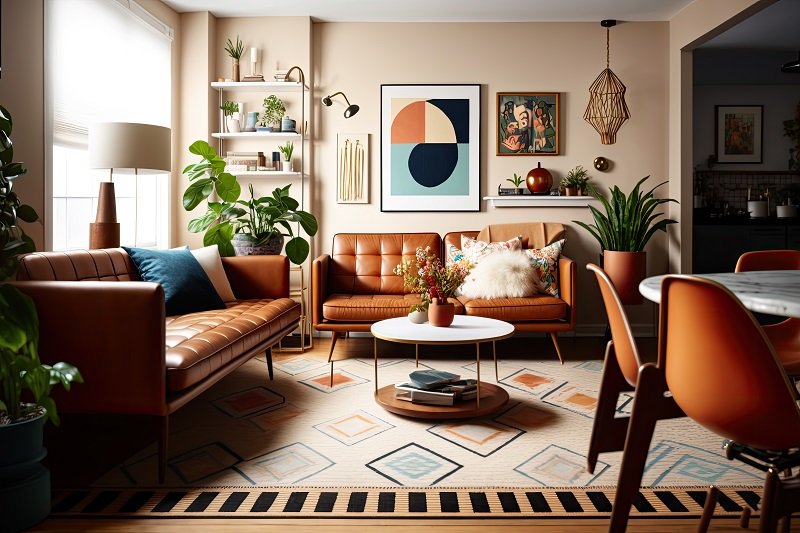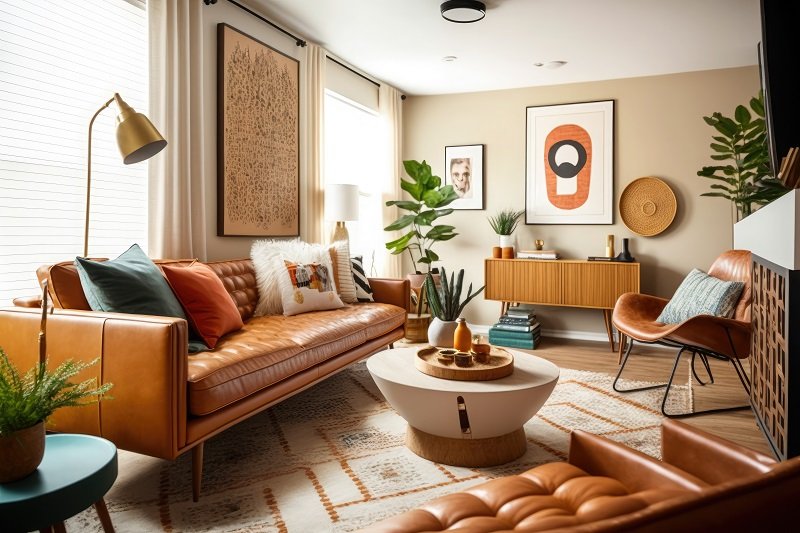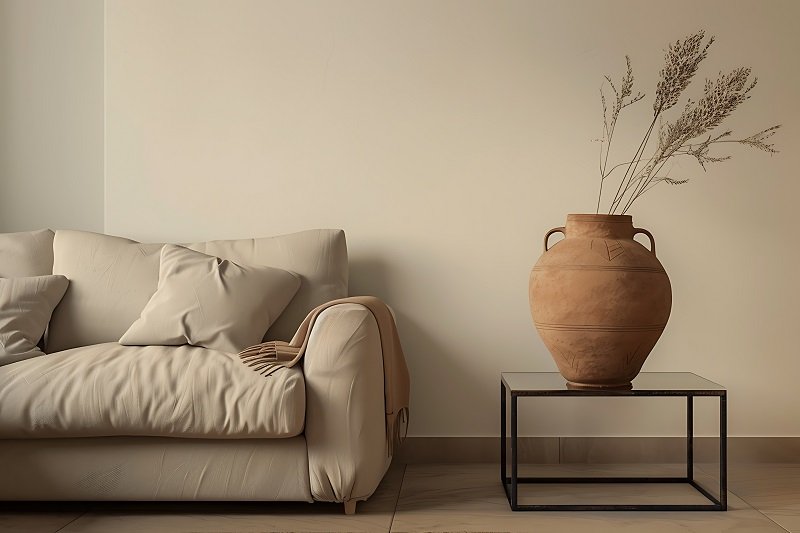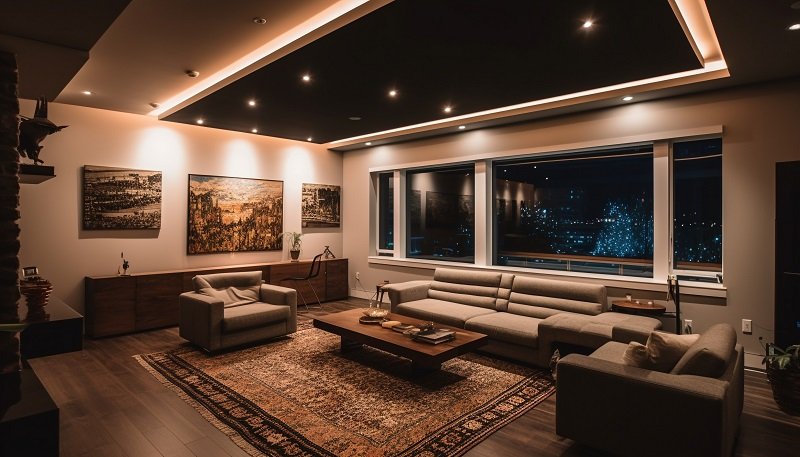How do I choose a sofa set?
Introduction
Returning home after a long day, all you can think about is falling onto that lovely, welcoming sofa, which promises to surround you in its comforting embrace. It’s more than simply a piece of furniture; it’s the centerpiece of your living room, where you relax, entertain visitors, and make memorable memories with loved ones. Buying the ideal sofa set may convert your living room into a place of comfort and style.
Selecting a sofa set to buy is a crucial decision that affects both the appearance and functionality of your home. Whether you’re redecorating your living room or relocating, the enormous variety of alternatives available might be intimidating. But do not be afraid! We’ll walk you through the most important elements, to choose and buy a sofa set that is the best for your house and lifestyle.
-
Analyzing the Room Layout
Picture your living room as an empty surface. The sofa serves as the focal point of the room, setting the tone. Begin by evaluating the arrangement of your room. Is it large or cozy? Is the floor plan open or divided into distinct parts? The arrangement will have a big impact on your sofa selection.
For example, in a big, open-concept living room, a sectional sofa might be an excellent choice. It establishes separate zones inside the room, resulting in a comfortable location for discussion or relaxation. In a smaller, more intimate area, however, a loveseat or tiny couch may be the ideal fit, ensuring that the space does not feel overcrowded.
-
Considering the Primary Function
Consider how you typically utilize your living space. Is it a meeting place for families and movie nights or a refined setting for entertaining guests? Understanding the principal function can help you buy a sofa set that matches your demands.
For instance, if your living room is the primary gathering place for the family, choose a long-lasting, comfy sectional with enough seats. Features such as reclining chairs and built-in storage can improve functionality. Alternatively, if you often entertain visitors, a sophisticated Chesterfield or a sleek modern couch may better suit the environment you need.
-
Ensuring Compatibility with Existing Furniture and Décor
Your sofa must match the other furniture and décor in your living room. Consider the style, color palette, and materials of your present furniture. A well-chosen sofa may improve the visual appeal of your living room, resulting in a more solid and welcoming setting.
In particular, if your living room has mid-century contemporary furniture, a couch with clean lines and tapered legs will fit right in. Alternatively, if your decor is more classic or unique, a couch with more detailing or interesting textiles may complement and improve the entire appearance.
What to Look for When Buying a New Sofa Set?
When it comes to selecting the perfect sofa, there are many important elements to consider. Each factor contributes significantly to ensuring that your new piece of furniture satisfies your expectations for comfort, elegance, and utility. Let us take a closer look at them.
1- How Do I Determine My Space Requirements?
Before you go to a furniture store or explore online, you should have a good grasp of your living room. Determining your space needs will save you from the disappointment of buying a sofa set that does not fit.
- Room Measurements: Measure the length, width, and height of your living room. Pay close attention to entrances, staircases, and other limitations that could block the transport and positioning of your sofa.
- Sofa Size: Consider the optimal size of your sofa regarding the room. A huge sofa may dominate a small area, whereas a little sofa may appear lost in a vast living room. Balance is essential.
- Flow & Mobility: Allow enough space around the sofa for comfortable mobility. You don’t want your new sofa to restrict walkways or create a crowded space.
2- How Do I Measure My Space?
Accurate measurements are critical to preventing costly errors. Here’s a step-by-step strategy for measuring your area properly.
- Measure the Room: Begin by measuring the length, width, and height of your living room. Use a tape measure to record these dimensions.
- Plan the Layout: Draw a floor layout of your living space. Include windows, doorways, and any other architectural elements. This will allow you to imagine where your sofa will go and how it will blend in with the rest of your furniture.
- Allow for Clearance: Allow for at least three feet of walking space around the sofa. This promotes a smooth flow of movement and keeps the room from feeling confined.
3- How Do I Choose the Right Style?
Your sofa should not only fit into your room but also represent your unique taste and match the current home decor.
- Personal Taste: Consider the styles you are naturally drawn to. Do you like modern, minimalist designs or old, classic looks?
- Home Décor: Consider the current décor in your living room. Your sofa should mix well with your existing furniture and accessories.
- Functionality: Decide how you will utilize the sofa. If you enjoy hosting movie nights, a sofa with a chaise may be excellent. If you like a more formal atmosphere, Chesterfield would be a better choice.
4- How Do I Choose the Best Material?
The material of your sofa determines its longevity, comfort, and aesthetic appeal. Choosing the proper material may make a significant difference in how satisfied you are with your purchase.
- Lifestyle and Use: Think about how and who will use the sofa. If you have children or dogs, you may want a durable and easy-to-clean material, such as leather or microfiber.
- Comfort: Different materials provide varying levels of comfort. Fabric sofas may seem warmer and more inviting, but leather sofas may be cold and elegant.
- Maintenance: Consider the upkeep necessary for each material. Some textiles may be machine washable, however, leather must be conditioned on a regular basis to keep its appearance and feel.
5-How Do I Choose the Correct Color Palette?
The color of your sofa may set the tone for your whole living room. It’s critical to select a color that matches your current décor and shows your unique style.
- Existing Décor: Assess the colors and patterns that already exist in your home. Your sofa should complement rather than contrast with those parts.
- Room Size and Lighting: Light colors may make a tiny space appear larger and more open, whilst dark tones can bring warmth and friendliness to a large room.
- Personal Preference: Select the color that you enjoy and that makes you feel good. Neutral colors such as shades of gray are adaptable and timeless, but strong colors make a statement.
6-How Do I Consider Upholstery Options?
Upholstery influences both the appearance and feel of your sofa. Different textiles provide a variety of textures, patterns, and durability levels.
- Durability: Consider the durability of the upholstery. High-populated houses may benefit from long-lasting textiles such as microfiber or performance materials.
- Allergies: If you or your family members have allergies, consider upholstery that is dust-resistant or hypoallergenic.
7-How Do I Assess Construction and Quality?
A well-constructed couch is a long-term investment. Quality construction guarantees durability, comfort, and long-term enjoyment.
- Frame Material: Choose hardwood frames over softwood or particleboard frames for greater durability.
- Joinery: High-quality sofas use dowels, corner blocks, or metal brackets for frame joinery. Avoid sofas that are stapled or glued.
- Cushion Fill: Different fillings provide varying levels of comfort and durability. High-density foam, down, or a mix of the two can offer long-lasting comfort and support.
8-How Do I Set a Realistic Budget?
Setting a budget helps you to narrow down your selections and discover a sofa that suits your demands while being affordable.
- Initial Cost vs. Longevity: While it may be tempting to go with a lower-cost alternative, investing in a higher-quality sofa can save you money over time.
- Hidden Costs: Consider additional costs like shipping, assembly, and upkeep. These expenses can accumulate and have an impact on your total budget.
- Financing Options: Some stores provide financing and payment options. This can help make a high-end sofa more reasonable by spreading the expense over time.
Conclusion
Buying a sofa set requires careful consideration of several criteria, including space needs and style to material and money. By taking the time to consider your requirements and preferences, you can make an informed selection that will improve your living space and give comfort for many years to come. Remember, a sofa is more than simply a piece of furniture; it’s an important element in your house.
FAQs
1- How do I determine the right size sofa for my living room?
Measure your space carefully, including doorways and other potential obstacles. Consider the scale of the room and choose a sofa that complements the size without overwhelming it.
2- What is the most durable sofa material?
Leather and microfiber are among the most durable materials. Leather is easy to clean and ages well, while microfiber is stain-resistant and can withstand heavy use.
3- How can I match my sofa to my existing décor?
Look at the colors, patterns, and styles already in your living room. Choose a sofa that either complements these elements or provides a stylish contrast. Neutral colors are versatile and timeless.
4- What’s the best type of sofa for a small space?
Consider loveseats, apartment-sized sofas, or sectional sofas with a chaise. Modular sofas are also a great option because they can be configured to fit smaller spaces.
5- How often should I clean my sofa?
Regular maintenance includes vacuuming weekly and spot-cleaning spills immediately. Deep cleaning depends on the material—fabric sofas might need professional cleaning once a year, while leather sofas can be wiped down and conditioned every few months.
6- Can I customize the fabric and color of my sofa?
Many furniture stores, including Venus Home Furniture, offer customization options. You can choose from a variety of fabrics, colors, and finishes to match your style and needs.
7- What should I consider for sofa cushions?
Look for high-density foam cushions for lasting support and comfort. Down-filled cushions offer a plush feel but require more maintenance. Consider a blend of both for a balance of comfort and durability.
8- How can I ensure my sofa is high quality?
Check the frame material (hardwood is best), joinery (look for dowels and metal brackets rather than staples), and cushion fill. Ask about warranties and read reviews to ensure you’re getting a well-constructed piece.
9- What’s the average lifespan of a sofa?
A good-quality sofa can last 7-15 years, depending on the material, usage, and maintenance. Leather sofas tend to last longer than fabric ones due to their durability.
10- Is it better to buy a sofa in-store or online?
Both options have their pros and cons. In-store shopping allows you to test the comfort and quality firsthand, while online shopping offers a wider selection and convenience. Ensure you read reviews and check return policies when buying online.








